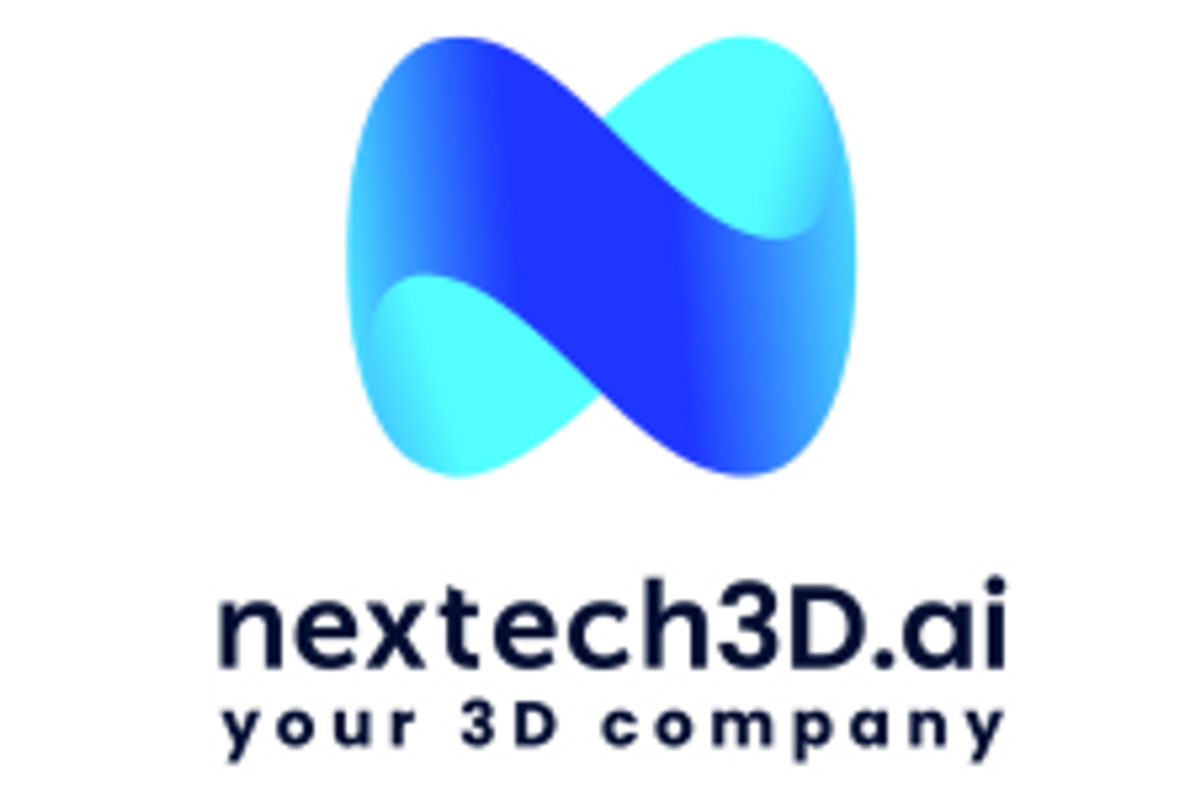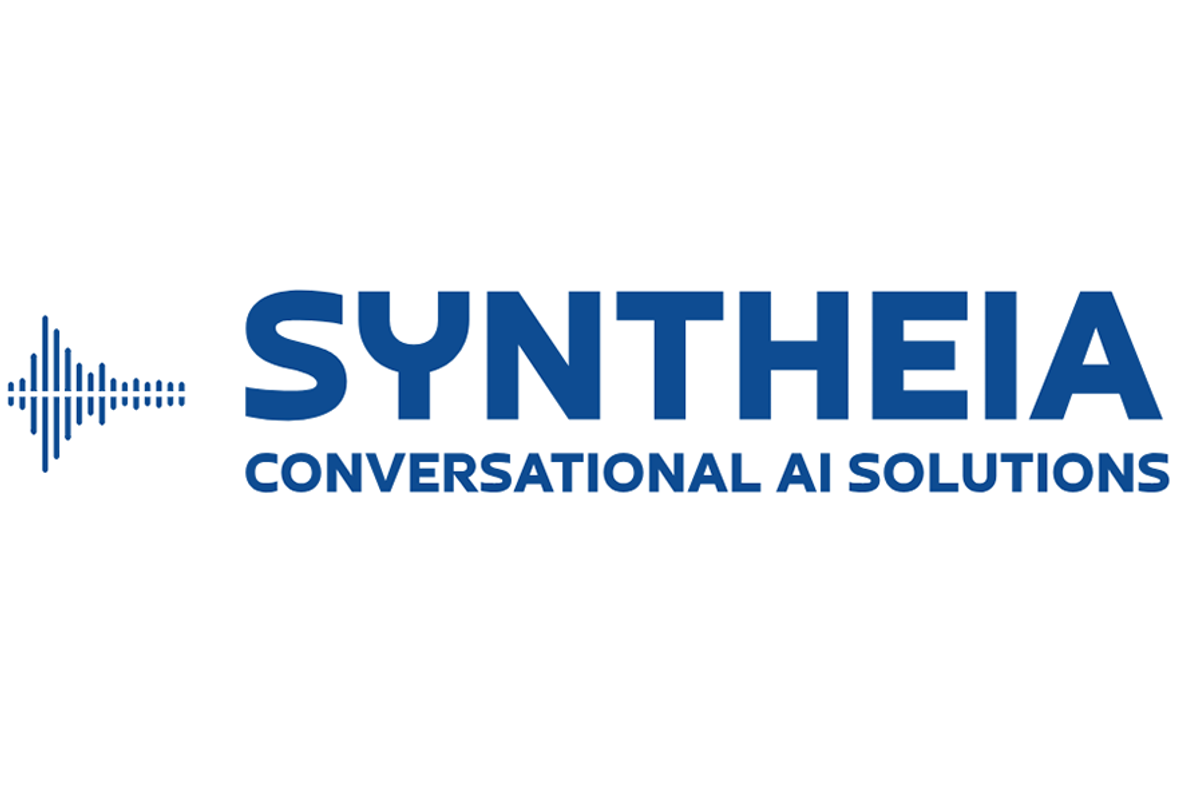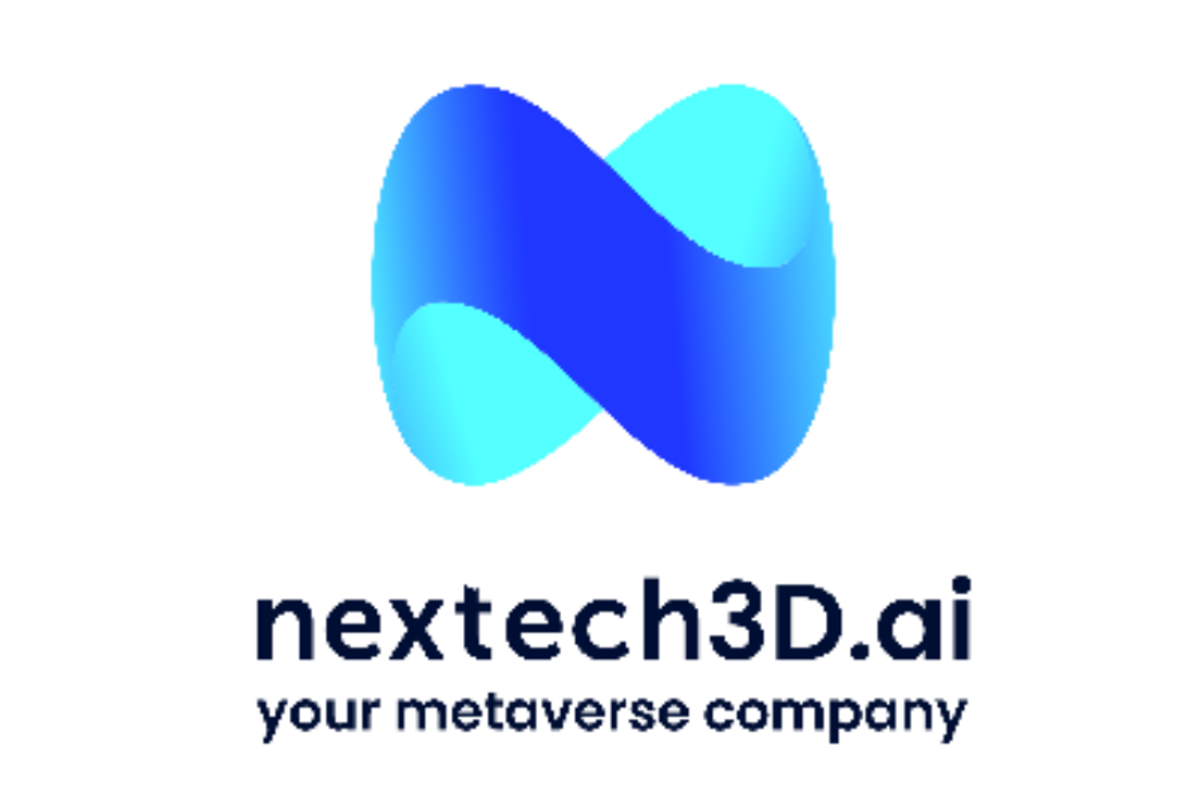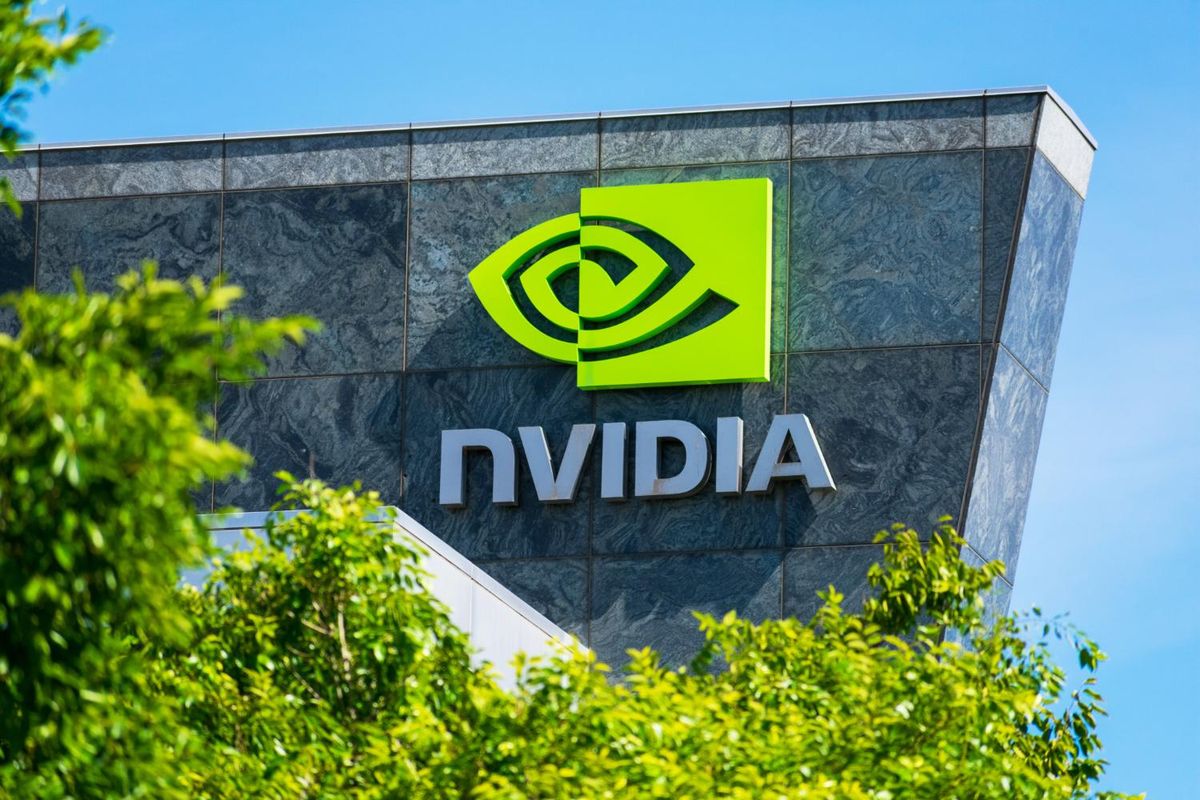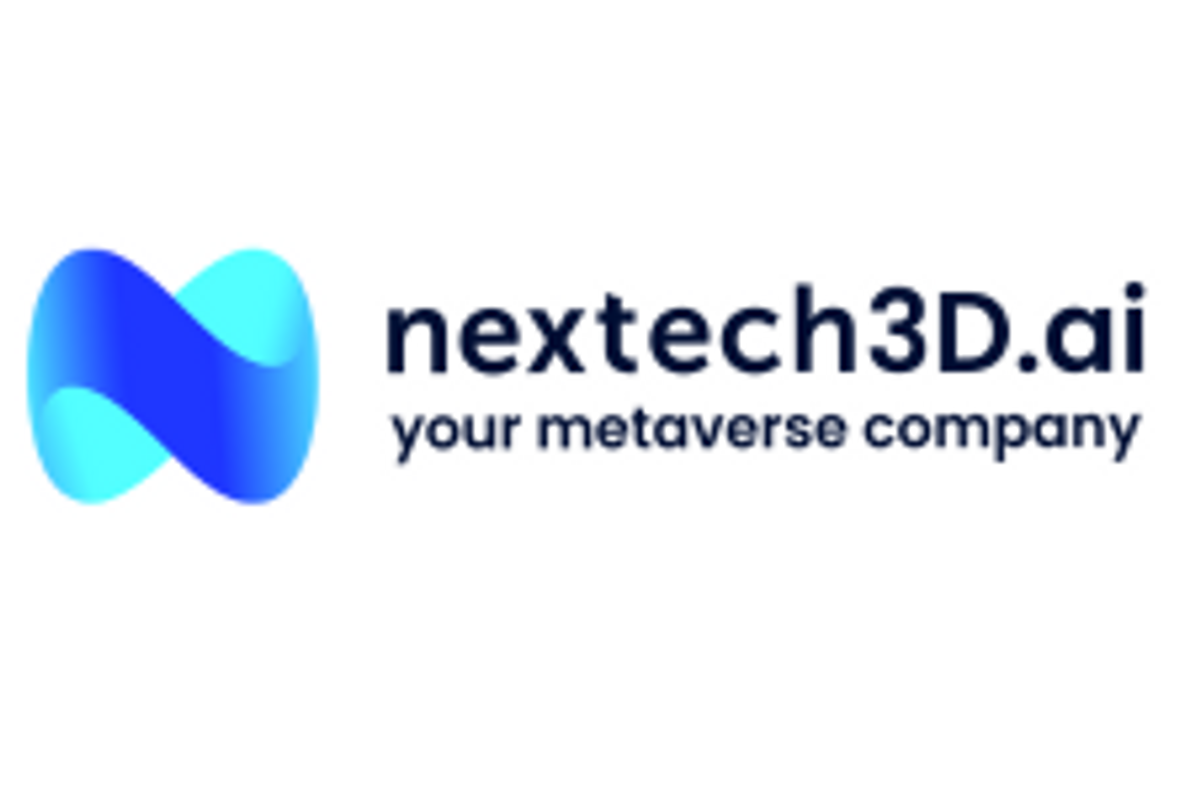
April 03, 2024
Nextech3D.AI (OTCQX:NEXCF)(CSE:NTAR)(FSE:1SS), a patented 2D-3D generative AI-powered 3D model supplier (Patent #11,948,248) for Amazon, Miele, P&G, Kohls, Wesfarmers Group "Bunnings" (Australia's largest listed company) and other major e-commerce retailers is proud to announce that U.S. Patent and Trademark Office (USPTO) has officially issued a patent for the Company's technology to generate three-dimensional (3D) models from two-dimensional (2D) images: Patent #11,948,248.
Nextech3D.ai CEO Evan Gappelberg commented, "We are extremely pleased that we have been awarded this patent by the USTPO, and we believe that it is a pivotal patent for our patent portfolio. We see this patent in the context of AI, and 2D to 3D model generation as the key patent for the 3D modeling industry which adds value to Nextech3D.ai and for our shareholders." He continued, " With this patent being recognized by the USPTO, we are now one of the technology leaders in the field of 2D photos to 3D models using AI. We will be promoting this new patent as it really gives us a competitive advantage and separates Nextech3D.ai from other companies that make 3D models. With this second AI patent issuance and seven additional patents filed, we continue to build a moat around our 3D model making for e-commerce business with BOTH industry expertise and intellectual property; which includes GPT AI powered 3D model generation. This second AI patent approval reinforces and validates Nextech3D.ai's commitment to increasing shareholder value by investing in 3D-AI GPT patents and solutions while simultaneously generating millions in annual 3D modeling revenue."
USPTO web reference for the patent : THREE-DIMENSIONAL (3D) MODEL GENERATION FROM TWO-DIMENSIONAL (2D) IMAGES
Livestream Details
Nextech3D.ai will host a special livestream event on Proactive Investors with CEO Evan Gappelberg, who will discuss new AI tech updates.
The Company invites individual and institutional investors, as well as advisors and analysts to attend the live, interactive online event. Guests are encouraged to join live and ask questions.
Date: Thursday April 4, 2024
Time: 2:00 p.m ET / 11:00 a.m PT
Guests: Evan Gappelberg (CEO & Founder of Nextech3D.ai)
Link to Join: https://www.youtube.com/watch?v=Xm7SExgFgos
Previous Patents
See a list below of the Patent Portfolio across Nextech3D.ai's group of companies:
| Company | Patent | Date Filed | Status / Issued |
| NEXTECH | THREE-DIMENSIONAL (3D) MODEL GENERATION FROM TWO-DIMENSIONAL (2D) IMAGES - covers core AI algorithms for creating 3D models automatically from 2D photos and is the core of Threedy tech | July 2022 | Issued 04/02/2024 |
| NEXTECH | EFFICIENT CREATION OF 3D MODEL AND APPLICATION - covers the virtual assembly line concept that helps scale 3D content creation from 2D photos | March 2022 | Pending |
| NEXTECH | MATERIAL ESTIMATION FOR 3D MODELING AND APPLICATION - covers the AI/ML techniques for creating 3D textures and materials automatically from 2D reference photos | March 2022 | Pending |
| NEXTECH | AUTOMATICALLY EXTRACTING TILEABLE UNITS FROM IMAGES - describes a method for compressing large textures with regular patterns to significantly reduce the size of the texture files | March 2022 | Pending |
| NEXTECH | AUTOMATIC BACKGROUND REMOVAL FOR HUMAN TELEPRESENCE - covers the technologies built into our HoloX app to create holograms without requiring a green screen | May 2023 | Pending |
| NEXTECH | THREEDIMENSIONAL (3D) MODEL GENERATION FROM CAD DATA - covers core artificial intelligence algorithms for creating 3D models automatically from 2D photos | March 2022 | Issued |
| ARWAY | GENERATING 3D DIGITAL TWIN FROM PROPERTY FLOORPLAN IMAGES FOR NAVIGATION SYSTEMS - covers the framework for generating a virtual representation of a floorplan from floorplan images, in accordance with some embodiments. | March 2023 | Pending |
| ARWAY | DEVICE LOCALIZATION BASED ON TWO-DIMENSIONAL (2D) REFERENCE IMAGES - covers integration of visual markers, such as QR codes or other identifiable 2D objects in the physical environment, with an online map database. | June 2023 | Pending |
- Nextech3D.ai Receives Notice From USPTO To Be Granted Pivotal AI Patent for Generating 3D Models from 2D images
- Nextech3D.ai Announces Formation of AI Incubator and AI Acquisition & Development Division With Potential 2024 IPO Spin Out
- Nextech3D.ai Establishes New Business Unit Led by Former META Executive, Targeting Jewelry Industry with GPT AI CAD-3D Models, Blockchain Technology, and NFTs
- Nextech3D.ai Expands AI Tech Team and Doubles Office Space As Demand Increases For GPT AI Platform and 3D Model Production In Hyderabad, India
- Nextech3D.ai Launches Next Era of GPT AI 3D Solutions Led by Former Microsoft Executive
- Nextech3D.ai Lands $1.8 Million 3D Modeling Deal with NASDAQ 100 Technology Company
Sign up for Investor News and Info - Click Here
About Nextech3D.ai
Nextech3D.ai or the "Company," (OTCQX: NEXCF) (CSE: NTAR) (FSE: 1SS), is a versatile augmented reality and AI technology company that utilizes its proprietary artificial intelligence (AI) to craft immersive 3D experiences at scale for E-COMMERCE. The Company's primary focus lies in creating high-quality 3D WebAR photorealistic models for Amazon and various other online retailers with patented 2D-3D technology. Nextech3D.ai has adopted a unique approach to creating shareholder value beyond its operating business of creating 3D models.
The Company also develops or acquires disruptive AI-technologies, which are subsequently spun out to shareholders as standalone public companies. This spin-out strategy allows Nextech3D.ai to issue stock dividends to its shareholders while maintaining significant ownership in the public spin-out, without dilution to the parent company Nextech3D.ai.
Notably, Nextech3D.ai successfully spun out "ARway," (OTCQB: ARWYF | CSE: ARWY | FSE:E65 ) its spatial computing platform, as a standalone public company on October 26, 2022. The Company retains a 49% stake with 13 million shares in ARway Corp. while distributing 4 million shares to Nextech shareholders.
Similarly, Nextech3D.ai accomplished its second spin-out launching Toggle3D.ai, (OTCQB: TGGLF | CSE: TGGL | FSE: Q0C ) an AI-powered 3D design studio aimed at competing with Adobe. The Company retains a 44% stake with 13 million shares in Toggle3D.ai Corp.
To learn more, please follow us on Twitter, YouTube, Instagram, LinkedIn, and Facebook, or visit our website: https://www.Nextechar.com.
For further information, please contact:
Investor Relations Contact
Julia Viola
investor.relations@nextechar.com
Nextech3D.ai
Evan Gappelberg
CEO and Director
866-ARITIZE (274-8493)
Forward-looking Statements
The CSE has not reviewed and does not accept responsibility for the adequacy or accuracy of this release.
Certain information contained herein may constitute "forward-looking information" under Canadian securities legislation. Generally, forward-looking information can be identified by the use of forward-looking terminology such as, "will be" or variations of such words and phrases or statements that certain actions, events or results "will" occur. Forward-looking statements regarding the completion of the transaction are subject to known and unknown risks, uncertainties and other factors. There can be no assurance that such statements will prove to be accurate, as future events could differ materially from those anticipated in such statements. Accordingly, readers should not place undue reliance on forward-looking statements and forward-looking information. Nextech will not update any forward-looking statements or forward-looking information that are incorporated by reference herein, except as required by applicable securities laws.
NTAR:CNX
The Conversation (0)
10 October
CSE Bulletin: MOC Eligibility Update
The following CSE-Listed symbol will become MOC Eligible as detailed below. Symbol Company Name Effective Date AAWH.U Ascend Wellness Holdings, Inc. Wednesday October 15, 2025 LFLR LaFleur Minerals Inc. MILI Military Metals Corp. MMET Miata Metals Corp. NTAR Nextech3D.ai Corporation QIM Quimbaya... Keep Reading...
09 May 2024
Nextech3D.ai's AI Search Engine Powered by Nvidia GPUs Accelerating It's Production of 3D Models
New AI Increasing 3D Model production up to 40%Search engine has over 200,000 3D models with unlimited color and texture variations Nextech3D.ai (OTCQX:NEXCF)(CSE:NTAR)(FSE:EP2), a patented 2D-3D Generative AI-Powered 3D model supplier (Patent #11,948,248) for Amazon, Miele, P&G, Kohls, and... Keep Reading...
08 May 2024
Nextech3D.ai Receives Large 3D AI Purchase Order from Blue Chip Enterprise Customer
Nextech3D.ai Continues to Sign New & Renewal 3D Modeling Deals plus AR Visualization For Enterprise EcommerceCompany Has Expanded into AI CAD-3D Rendering to Capture Larger Market ShareNextech3D.ai (OTCQX:NEXCF)(CSE:NTAR)(FSE:EP2), a patented 2D-3D Generative AI-Powered 3D model supplier (Patent... Keep Reading...
02 May 2024
Nextech3D.ai Achieves Milestone with 3D AI Modeling Profit Margins Hitting 80% in Q2 2024 Up From 30% in 2023
Nextech3D.ai (OTCQX:NEXCF)(CSE:NTAR)(FSE:EP2), a patented 2D-3D Generative AI-Powered 3D model supplier for Amazon, Miele, P&G, Kohls, Wesfarmers Group "Bunnings" (Australia's largest listed company) and other major e-commerce retailers is excited to announce a major milestone in its 3D modeling... Keep Reading...
29 April 2024
Nextech3D.ai Reports Fiscal Year 2023 and Fourth Quarter 2023 Audited Financial Results
2023 Annual revenue growth of + 56% 2023 Annual revenue of $5 million Nextech3D.ai (OTCQX:NEXCF)(CSE:NTAR)(FSE:EP2), a patented 2D-3D Generative AI-Powered 3D model supplier (Patent #11,948,248) for Amazon, Miele, P&G, Kohls, Wesfarmers Group "Bunnings" and other major e-commerce retailers... Keep Reading...
18 December
Turnium and Syntheia AI Commence Commercial Rollout of AI-Powered Communications Platform Across Partner Network
Collaboration achieves revenue-generating commercialization and scale deployment milestones
Turnium Technology Group Inc. (TSXV: TTGI) (FSE: E48) ("TTGI" or "the Company"), a global Technology-as-a-Service (TaaS) wholesale provider, is pleased to announce a global commercialization partnership with Syntheia Corp. ("Syntheia") (CSE: SYAI), a leading provider of conversational AI... Keep Reading...
16 December
Nextech3D.ai Appoints Global Head of Sales
Appointment Strengthens Sales Execution as Company Focuses on Scaling Revenue and Efficiency TORONTO, ON / ACCESS Newswire / December 16, 2025 / Nextech3D.ai (CSE:NTAR,OTC:NEXCF)(OTCQX:NEXCF)(FSE:1SS), an AI-first technology company providing event technology, 3D modeling, and spatial computing... Keep Reading...
09 December
Nextech3D.ai to Acquire Krafty Labs, Expanding AI Event Solutions for Enterprise Clients
Krafty Labs Generated 2025 Year to date Revenue of $1.1 mill with a 72% gross marginAll-Cash Deal for $600,000Acquiring a Blue Chip customers list; Google, Meta, Oracle etcNextech3D.ai Doubles Customer Base to 1000+Nextech3D.ai is Accelerating its Growth As a One-Stop AI Event Tech Suite NEW... Keep Reading...
02 December
Nextech3D.ai Announces Definitive Agreement to Acquire 100% of ARway, Streamlining Operations
Nextech already owns 15million shares or about 40% of the 38 million shares outstanding in Arway Corporation ("Arway") OTCQB: ARWYF / CSE: ARWY TORONTO, ON / ACCESS Newswire / December 2, 2025 / Nextech3D.ai (CSE:NTAR,OTC:NEXCF)(OTCQX:NEXCF)(FSE:1SS), Nextech an AI-first 3D modeling and event... Keep Reading...
28 November
Tech Weekly: Tech Stocks Recover; Meta, Alphabet Reportedly in Partnership Talks
Welcome to the Investing News Network's weekly brief on tech news and tech stocks driving the markets. We also break down next week's catalysts to watch to help you prepare for the week ahead.Don't forget to follow us @INN_Technology for real-time news updates!Securities Disclosure: I, Meagen... Keep Reading...
21 November
Tech Weekly: NVIDIA Earnings Impress, Bezos Launches AI Startup
Welcome to the Investing News Network's weekly brief on tech news and tech stocks driving the markets. We also break down next week's catalysts to watch to help you prepare for the week ahead.Don't forget to follow us @INN_Technology for real-time news updates!Securities Disclosure: I, Meagen... Keep Reading...
Latest News
Interactive Chart
Latest Press Releases
Related News
TOP STOCKS
American Battery4.030.24
Aion Therapeutic0.10-0.01
Cybin Corp2.140.00
